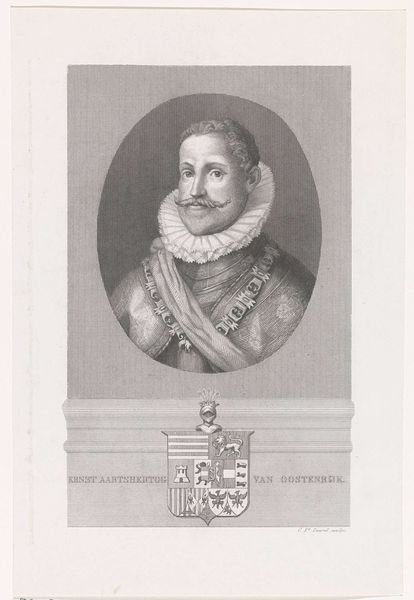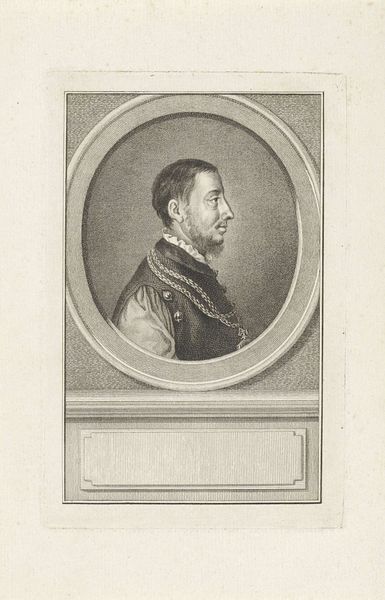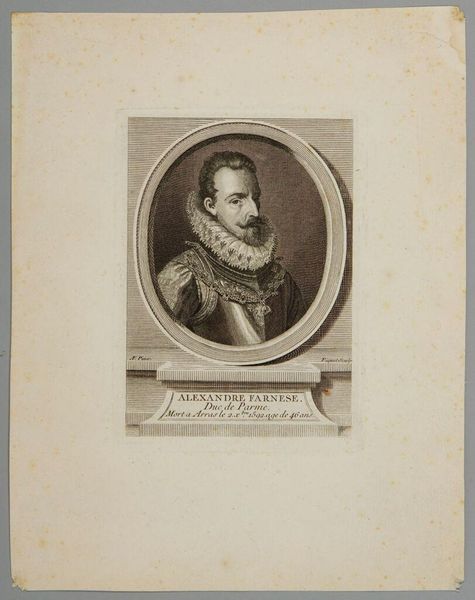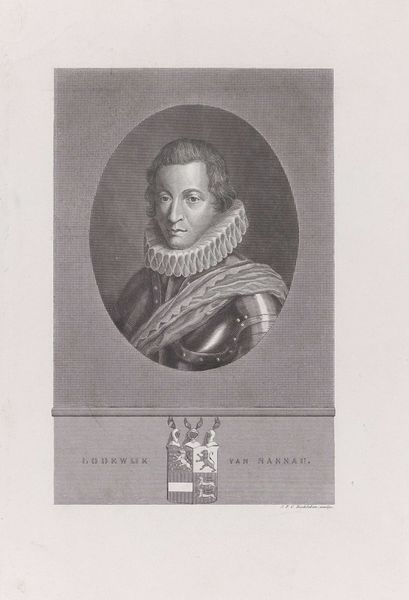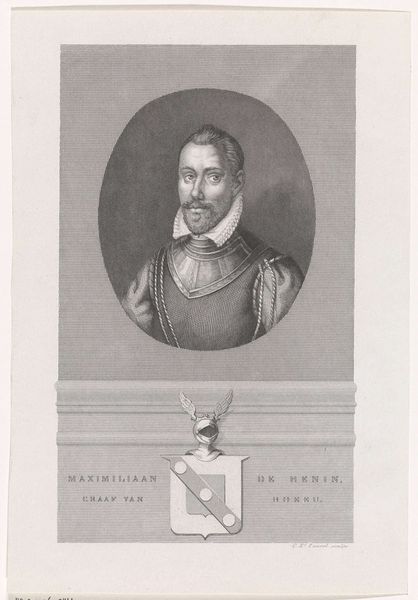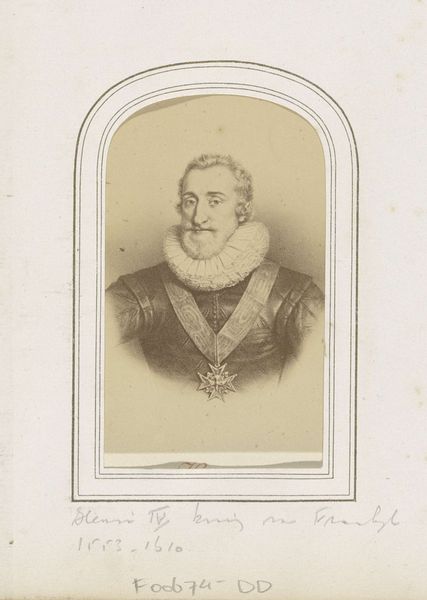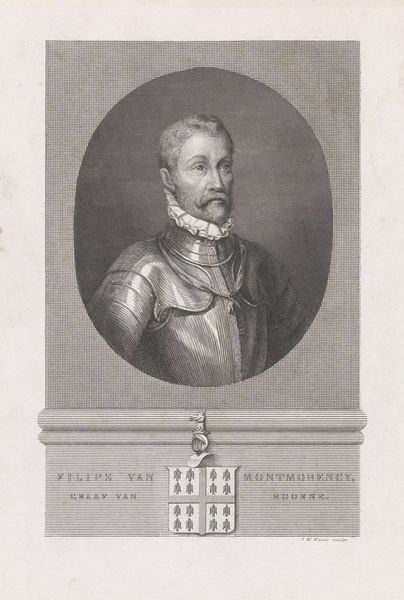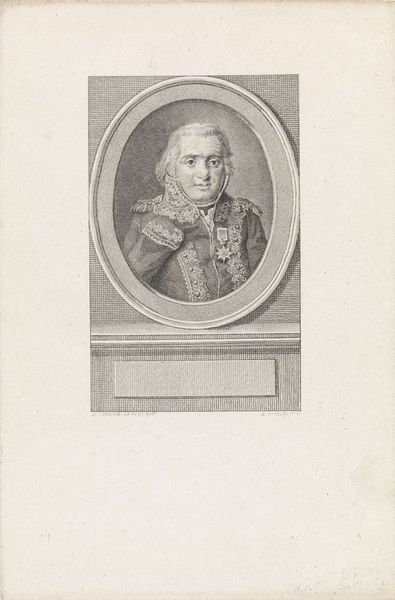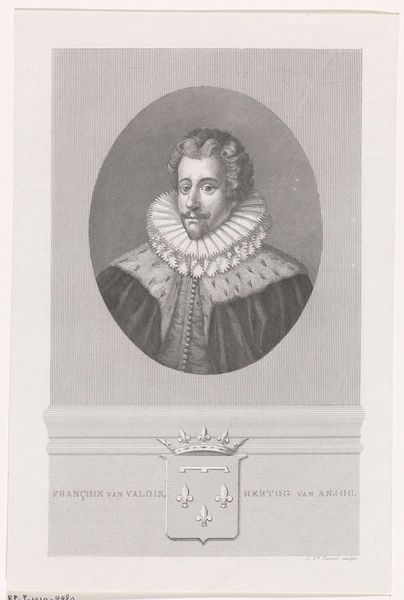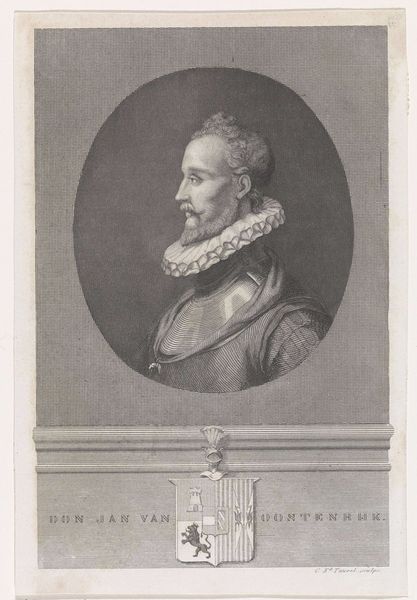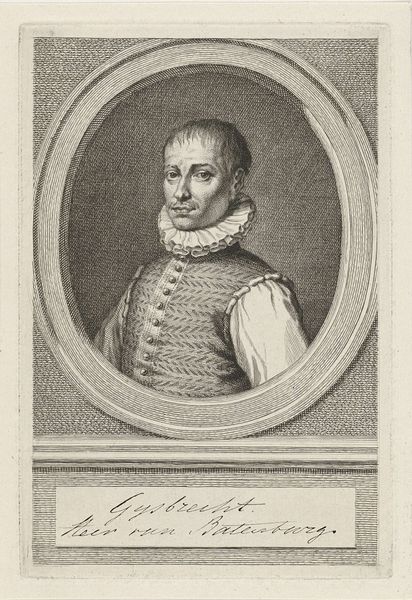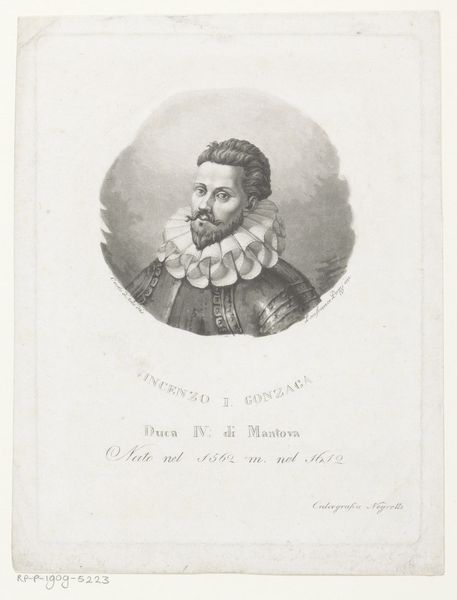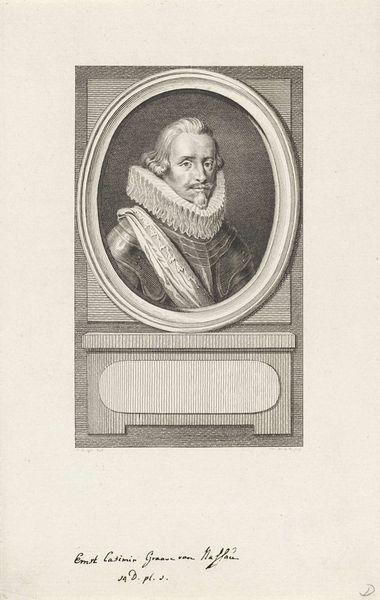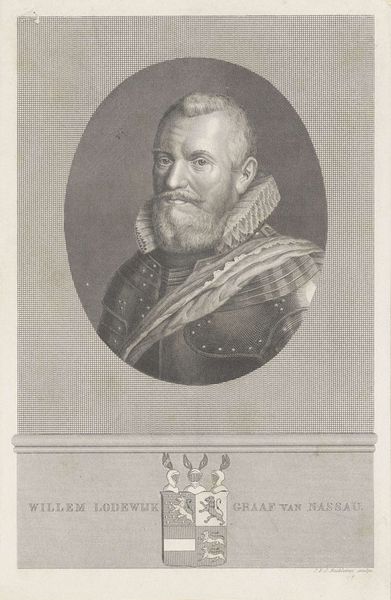
Dimensions: height 264 mm, width 186 mm
Copyright: Rijks Museum: Open Domain
Curator: Let's discuss this striking portrait, crafted by Edouard Taurel between 1841 and 1879. The work, residing here at the Rijksmuseum, is entitled "Portret van Alessandro Farnese, hertog van Parma". Editor: My immediate impression is one of imposing formality. The figure's gaze is intense, his posture rigid. The tight ruff around his neck seems almost like a physical barrier, reinforcing his authority. Curator: Alessandro Farnese, Duke of Parma, was indeed a significant figure—a military leader and governor of the Netherlands during a turbulent period of religious conflict. Taurel's engraving speaks to that complex history, particularly regarding power structures and the representation of male authority. Editor: Precisely. Observe the meticulously rendered details. The crisp lines of the engraving capture the textures of his armor and the intricate folds of the ruff. The use of light and shadow gives the portrait a three-dimensional quality, lending gravitas. It's almost a classical ideal realized through the precision of metal. Curator: And beneath the portrait we see his heraldic shield—a potent symbol of family lineage and the social hierarchies of the time. It speaks to the interweaving of power, bloodlines, and visual representation. How do such images shape our understanding of figures like Farnese, both then and now? Editor: Absolutely. The visual language employed here is calculated to project dominance. Notice the careful composition: the oval frame around his head, set against the more rigid architectural setting of the print, it isolates and elevates the Duke. Curator: For today's viewers, confronting the legacies of these historical figures requires critical engagement. Whose stories are being told and, equally important, whose are being silenced in such portrayals? Editor: A compelling point. Looking beyond the immediate grandeur, the rigid pose and intense gaze, invite a more critical viewing. We could consider how the artist, through masterful execution, elevates a subject entangled with a complicated history. Curator: By delving into the social and political contexts, alongside an understanding of the visual construction, we glean deeper insight into art's multifaceted role in shaping history. Editor: Indeed. Form and context are mutually illuminating; our close looking, revealing far more than a likeness of a man.
Comments
No comments
Be the first to comment and join the conversation on the ultimate creative platform.
